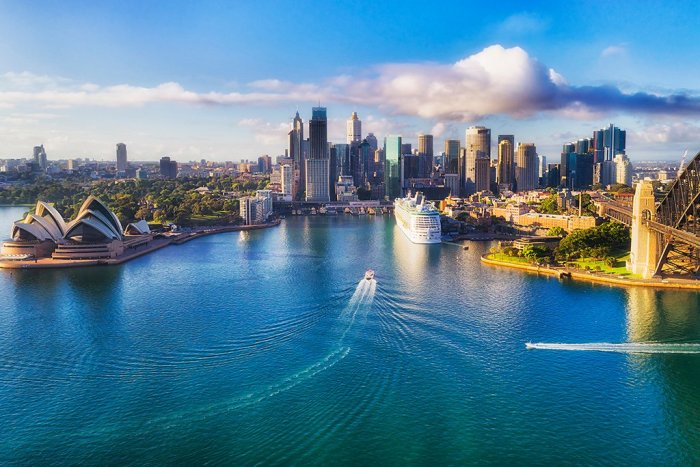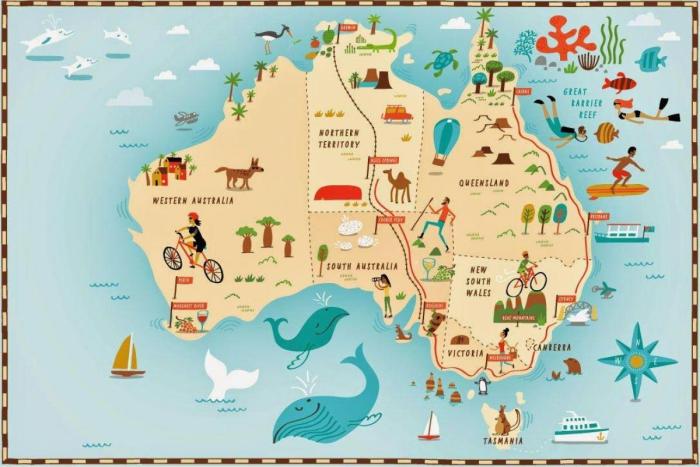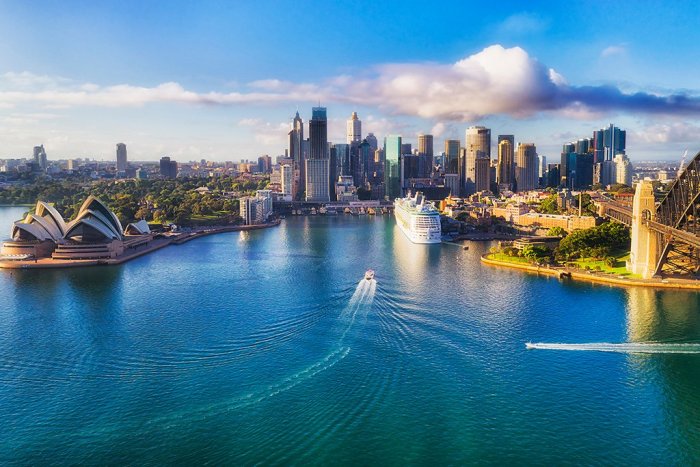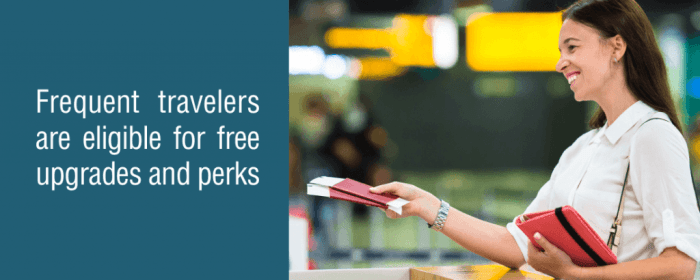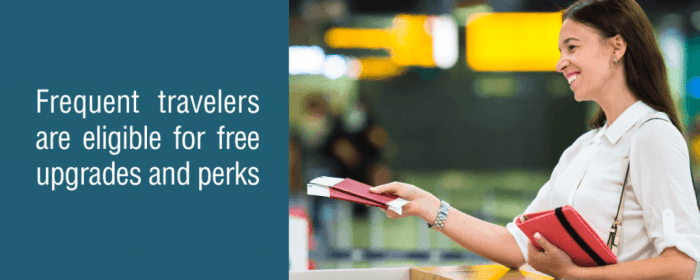Best time to visit Marseille? This guide delves into the perfect season for your trip, balancing weather, crowds, and budget. From vibrant festivals to quiet off-season adventures, we’ll uncover the optimal time to experience the city’s unique charm.
Marseille’s appeal varies with the season. Spring offers pleasant temperatures for exploring outdoor cafes and parks, while summer brings the iconic beaches and lively atmosphere. Autumn provides a mellow transition, and winter offers a different kind of beauty, with potential for fewer crowds and lower prices. This detailed look at each season will help you choose the best time for your perfect Marseille experience.
Seasonal Weather Patterns in Marseille

Marseille, a vibrant city on the French Riviera, offers a unique Mediterranean climate, making it a desirable destination year-round. Understanding the seasonal variations in weather is key to planning your trip and maximizing your enjoyment of outdoor activities and cultural experiences.The weather in Marseille, influenced by the warm waters of the Mediterranean Sea, is generally mild and sunny throughout the year.
However, noticeable differences in temperature and precipitation exist across the seasons, influencing the types of activities best suited for each period.
Spring Weather in Marseille
Spring in Marseille typically brings pleasant temperatures, ideal for exploring the city’s charming streets and enjoying outdoor cafes. The average temperatures are moderate, allowing for comfortable days spent walking, sightseeing, and soaking up the atmosphere. Expect a gradual increase in sunshine hours as the season progresses. Rainfall is generally lower than in the winter months, but occasional showers can still occur.
Flowering plants and blooming gardens are a common sight during spring, enhancing the visual appeal of the city.
Summer Weather in Marseille
Marseille’s summer season is characterized by hot and dry weather. High temperatures are typical, making outdoor activities enjoyable, but also demanding. The intense heat can make exploring during the peak of the day less appealing, but the evenings and early mornings are usually pleasant. Sunshine hours are high, and rainfall is scarce. This is the peak tourist season, so expect larger crowds.
The warm weather also encourages participation in water-based activities and outdoor events.
Autumn Weather in Marseille
Autumn in Marseille offers a transition period between the heat of summer and the coolness of winter. Temperatures gradually cool down, creating a delightful atmosphere for enjoying the outdoors. Sunshine hours remain plentiful, but rainfall becomes more frequent. Crisp mornings and warm afternoons are common, providing a pleasant balance for various activities. Many festivals and events are held during autumn, providing a rich cultural experience.
Marseille’s stunning beaches and vibrant atmosphere are best enjoyed during the spring and fall months, when the crowds thin out and the weather is pleasant. However, if you’re planning a trip to Africa, it’s crucial to understand the cultural nuances and travel advisories before you go. For expert advice on preparing for your African adventure, check out this insightful article on what to know before planning a trip to Africa according to an expert: what to know before planning a trip to africa according to an expert.
Ultimately, spring and fall remain the ideal times to soak up the Mediterranean charm of Marseille.
Winter Weather in Marseille
Winter in Marseille experiences milder temperatures compared to other European cities. While temperatures can still be quite pleasant, it is crucial to pack layers, as occasional rain and cooler days can occur. Sunshine hours are significantly reduced compared to the summer months. The city is less crowded during winter, offering a more relaxed atmosphere for those seeking a quieter escape.
While winter weather can be unpredictable, it’s a great time to enjoy the city’s cozy atmosphere and explore the historical sites without the summer crowds.
Seasonal Weather Summary
| Season | Average Temperature (°C) | Sunshine Hours | Precipitation (mm) | Typical Events |
|---|---|---|---|---|
| Spring | 15-20 | 8-10 | 50-70 | Flowering, festivals |
| Summer | 25-30 | 12+ | 10-20 | Concerts, festivals, water activities |
| Autumn | 18-22 | 8-10 | 70-90 | Harvest festivals, fairs |
| Winter | 10-15 | 5-7 | 80-100 | Christmas markets |
Crowds and Tourist Activity
Marseille, a vibrant Mediterranean city, attracts a significant number of tourists throughout the year. Understanding the seasonal fluctuations in tourist volume is crucial for planning a trip, ensuring a positive experience, and avoiding potential overcrowding. The city’s charm, combined with its rich history and beautiful coast, makes it a popular destination for both short trips and extended stays.The impact of crowds is noticeable across various aspects of the city, from popular attractions to dining experiences and transportation.
Peak seasons, typically summer months, witness a surge in visitors, potentially leading to longer queues, higher prices, and more congestion. Conversely, the off-season months offer a more relaxed and intimate experience for visitors seeking a less hectic ambiance.
Typical Tourist Volume
Marseille’s tourist numbers fluctuate significantly depending on the season. Summer months (June to August) are consistently the busiest, experiencing a dramatic increase in visitors compared to the rest of the year. This high demand is driven by pleasant weather, ideal for outdoor activities and enjoying the city’s beaches. Winter months (November to February) usually see a considerable decrease in tourist numbers, allowing for a quieter and more affordable experience.
Impact of Crowds on Attractions, Restaurants, and Transportation
The volume of tourists significantly impacts the experience at key attractions, restaurants, and transportation networks. During peak seasons, attractions can face long queues, restaurants might experience higher prices and longer wait times, and public transportation could become more congested. Off-season periods typically provide a more relaxed atmosphere with shorter wait times and more readily available services. This fluctuation in visitor numbers is a direct response to the weather patterns and the demand generated by the season.
Popular Tourist Destinations and Seasonal Fluctuations
Several destinations within Marseille exhibit noticeable seasonal fluctuations in popularity. The Vieux Port (Old Port), for example, sees its highest volume during summer due to its lively atmosphere and the opportunity for water activities. Similarly, the beaches around Marseille experience a surge in visitors during summer months, which can lead to crowded conditions. Conversely, the city’s museums and historical sites might experience less congestion during the off-season, allowing visitors to appreciate the exhibits and surroundings more leisurely.
Projected Tourist Numbers by Month
| Month | Estimated Tourist Arrivals (in thousands) |
|---|---|
| January | 20 |
| February | 25 |
| March | 40 |
| April | 60 |
| May | 80 |
| June | 120 |
| July | 150 |
| August | 180 |
| September | 120 |
| October | 80 |
| November | 40 |
| December | 30 |
Note: These figures are estimations based on historical trends and expected weather patterns. Actual tourist arrivals may vary.
Festivals and Events: Best Time To Visit Marseille
Marseille, a vibrant city, comes alive with a diverse calendar of festivals and events throughout the year. These celebrations, from renowned music festivals to historical reenactments, significantly influence visitor numbers and accommodation demands. Understanding the schedule of these events allows travellers to tailor their visits for optimal experiences and potentially save money by booking accommodations in advance.The impact of festivals on Marseille’s tourism sector is substantial.
Marseille’s best time to visit is definitely spring or fall, avoiding the scorching summer heat. Thinking about a beach getaway? If you’re looking for incredible sandy stretches, check out the best beaches in miami for a totally different vibe. Ultimately, the perfect time to experience Marseille is when the weather is pleasant and the crowds aren’t overwhelming.
Major events attract large crowds, increasing demand for accommodation, transportation, and dining services. Consequently, prices for these services tend to rise during peak festival periods, especially for hotels and Airbnb rentals. Visitors should factor this into their budget planning, and booking in advance is crucial for securing desired accommodations at reasonable prices.
Major Festivals and Events
Marseille boasts a rich tapestry of cultural and historical events. Several festivals throughout the year attract considerable attention and influence visitor numbers. These events not only enhance the city’s cultural appeal but also shape the experience for tourists.
- La Fête de la Musique (Music Festival): Celebrated annually on June 21st, this event features live music performances across the city. The widespread participation and free nature of many performances often attract large crowds. This festival, known for its diverse musical offerings, is likely to influence accommodation choices, especially for music lovers.
- Marseille Summer Festival: A series of events spanning several weeks during the summer months. This festival often includes concerts, theatrical performances, and outdoor cinema screenings. The extended duration of this event, often running into the late summer, impacts accommodation demand, making early booking crucial.
- Festival des Arts et Métiers (Arts and Crafts Festival): Taking place in the fall, this festival showcases local artisans and craftspeople. This event, which often features workshops and exhibitions, may not have the same impact on overall visitor numbers as larger festivals, but it is still likely to draw dedicated visitors.
- Les Voiles de Marseille (Marseille Boat Show): A major event in late spring or early summer. This event is a crucial event for boat enthusiasts, attracting a specific niche audience. High demand for accommodations in this period is expected, particularly in marinas and areas near the ports.
Impact on Accommodation Costs and Availability
The presence of these festivals directly impacts the availability and cost of accommodation. During peak festival seasons, demand for hotel rooms and other types of lodging soars, leading to increased prices and potentially limited options.
“Early booking is highly recommended for securing the best possible deals and desired accommodation types.”
Visitors should anticipate higher prices for accommodation during these periods. It is prudent to consider alternative accommodation options or book well in advance to secure the best deals. For example, if a specific music festival is scheduled, demand for hotels and Airbnbs in the surrounding area will increase, influencing the prices.
Potential Impact on Travel Plans
- June: La Fête de la Musique attracts many visitors and may lead to higher accommodation costs and limited availability. Booking in advance is highly recommended.
- Summer: The Marseille Summer Festival is an extended period of events and, thus, is likely to have a substantial impact on accommodation costs. Booking well in advance is advisable.
- Late Spring/Early Summer: Les Voiles de Marseille attracts a dedicated boating audience. Anticipate potential price increases and limited availability in areas near the ports and marinas.
Accommodation and Transportation
Marseille, a vibrant city brimming with culture and history, attracts visitors year-round. Understanding the fluctuations in accommodation availability and pricing, along with transportation options, is crucial for planning a smooth and enjoyable trip. Knowing how these factors change throughout the year will help you budget effectively and make the most of your time in this beautiful city.Navigating the city’s transport network and finding suitable accommodation is simplified by understanding the seasonal variations.
This section dives into the specifics of accommodation costs and transport options, offering insights into peak and off-peak periods.
Accommodation Availability and Prices
Accommodation availability and prices in Marseille are highly dependent on the time of year. Peak season, encompassing summer months, sees a surge in tourist demand, leading to limited availability and higher prices across all lodging types. Conversely, the off-season, encompassing the winter months, offers greater flexibility and more affordable rates. Finding a suitable accommodation is usually less challenging in the off-season.
Transportation Options by Season
Marseille’s transportation system, a blend of public transport, taxis, and car rentals, adapts to seasonal changes in tourist activity. Public transport remains consistent throughout the year but can experience increased crowding during peak season. Taxis, often more expensive, may also have higher fares during peak times. Car rentals, especially during peak season, often require advance booking and can command premium prices due to increased demand.
Seasonal Comparison of Costs
The following table illustrates the average cost differences across various transportation and accommodation options throughout the year. Note that these are estimates and actual costs may vary based on specific demand and availability.
| Season | Average Hotel Rates (€ per night) | Average Train Fare (€ per person) | Average Rental Car Cost (€ per day) |
|---|---|---|---|
| Peak Season (June-August) | 150-250 | 50-80 | 70-120 |
| Shoulder Season (May, September) | 100-180 | 40-60 | 50-90 |
| Off-Season (October-May) | 70-150 | 30-50 | 40-80 |
Note: Prices are estimates and can vary based on specific hotel location, room type, and train routes.
Activities and Experiences
Marseille offers a vibrant tapestry of experiences, from sun-drenched beaches to historic landmarks. The city’s appeal transcends seasons, with activities tailored to suit every mood and preference. Understanding the nuances of each season allows visitors to maximize their enjoyment and avoid potential crowds or inclement weather.Marseille’s diverse offerings extend beyond its stunning coastline. Delving into its rich history, culture, and gastronomy reveals a city brimming with life, regardless of the time of year.
The choice of activity often depends on the desired atmosphere and personal preferences.
Outdoor Activities by Season
Marseille’s outdoor activities are deeply interwoven with the seasonal weather patterns. The city transforms with the changing seasons, offering unique experiences in each time of year.
- Spring (March-May): Springtime in Marseille is a delight. Pleasant temperatures encourage outdoor exploration. Hiking in the Calanques National Park, with its dramatic cliffs and hidden coves, becomes a popular choice. Picnics in the city’s parks, like Parc Borély, are perfect for enjoying the fresh air and blossoming flora. The crowds are generally moderate compared to peak summer months, allowing for a more relaxed experience.
- Summer (June-August): Summer in Marseille is synonymous with sun-soaked days and bustling beaches. The city’s beaches, like the Plage du Prado and the Calanques beaches, are a magnet for tourists. Swimming, sunbathing, and water sports are popular activities. Expect large crowds, especially on weekends and during holiday periods. The vibrant atmosphere of the city’s markets and restaurants is also a highlight during this time.
- Autumn (September-November): Autumn in Marseille offers a transition period, with warm days giving way to cooler evenings. Outdoor activities like cycling along the coastline, exploring the city’s charming neighborhoods, and visiting local markets are ideal. Crowds are generally smaller than summer, creating a more intimate experience. The vibrant colours of the foliage provide a picturesque backdrop.
- Winter (December-February): Winter in Marseille is generally mild compared to other European cities. While some rain is possible, the days are often sunny and pleasant. Exploring the city’s historical sites, such as the Vieux Port and the Notre-Dame de la Garde basilica, is an excellent choice. Many restaurants and cafes offer cosy indoor spaces for enjoying a warm drink and people-watching.
Cultural Experiences Throughout the Year
The experience of visiting museums and historical sites in Marseille can differ significantly across the seasons. Visitor volume and atmosphere can vary.
- Museums: Museums, like the Musée d’Art Contemporain, often see consistent visitor traffic year-round. However, peak season (summer) might experience slightly higher numbers. The overall atmosphere remains engaging regardless of the season, offering a chance to appreciate art and history.
- Historical Sites: Historical sites like the Vieux Port, with its iconic landmarks and bustling atmosphere, may see higher visitor numbers during peak season. However, the charm of the site is palpable in any season. The quieter winter months can offer a more intimate exploration of the area’s historical significance.
Seasonal Experiences
Here are some suggestions for enriching your Marseille experience based on the season:
- Spring: Hiking in the Calanques National Park, exploring local markets, and enjoying picnics in parks.
- Summer: Beach trips, water sports, attending local festivals, and enjoying outdoor concerts and events.
- Autumn: Cycling along the coastline, visiting local vineyards, and enjoying the autumnal colours.
- Winter: Visiting historical sites, enjoying traditional cuisine, and exploring the city’s Christmas markets.
Budget Considerations
Marseille offers a vibrant mix of experiences, from historic sites to bustling markets. However, the cost of visiting can vary significantly depending on the time of year and your chosen lifestyle. This section will explore the financial aspects of a trip to Marseille, providing estimates and examples for different budgets.
Estimated Budgets for Peak and Off-Peak Seasons
Marseille’s prices fluctuate with the season. Peak season (July-August) sees higher demand, leading to increased costs for accommodation, food, and activities. Off-peak seasons (spring and autumn) generally offer more affordable options. A rough estimate for a 7-day trip in peak season might range from €1500-€2500 per person, while an off-peak trip could cost €1000-€1500. These figures are estimates and can vary based on your choices and preferences.
Accommodation Costs by Season
Accommodation prices in Marseille are closely tied to the season. Hotels and apartments are generally more expensive during peak summer months. For example, a mid-range hotel room might cost €150-€250 per night in July, compared to €80-€150 during the shoulder seasons. Budget-friendly options, such as guesthouses and hostels, are available year-round, but might be harder to book in high season.
Consider booking in advance, especially during peak season, to secure the best rates.
Food and Drink Costs
The cost of food and drink in Marseille is generally moderate, with a wide variety of options to suit different budgets. Enjoy local delicacies like bouillabaisse or fresh seafood at restaurants or local markets. During peak season, restaurant prices might increase, and popular spots can book up quickly. Exploring local markets for fresh produce and picnic supplies can be a cost-effective way to enjoy meals.
Activity Costs by Season
Entry fees to popular attractions like the MuCEM or the Vieux Port vary throughout the year. For example, MuCEM might have a slightly higher price tag in peak season, while smaller museums or local events might have similar costs year-round. Consider purchasing a Marseille Pass for discounted access to various attractions, which can be a worthwhile investment depending on the number of sites you plan to visit.
Budget-Friendly Travel Options
Numerous options can help keep your Marseille trip affordable. Picnics in parks, exploring local markets, and utilizing public transportation are cost-effective ways to enjoy the city. Consider preparing some meals yourself and enjoying free activities like walking tours or exploring local neighborhoods.
Example Budget-Friendly Trip in Off-Peak Season, Best time to visit marseille
An off-peak trip in October, for instance, might involve staying in a guesthouse for €50-€80 per night, enjoying budget-friendly meals in local restaurants for €10-€15 per person, and utilizing public transport and walking tours. This allows you to explore the city without breaking the bank.
Marseille’s gorgeous charm is best enjoyed during the shoulder seasons, spring and fall. The crowds thin out, the weather is pleasant, and the city feels less hectic. It’s worth considering how to live to 100 years old according to centenarians, how to live to 100 years old according to centenarians , which might, in turn, influence your ideal travel time.
Ultimately, the best time to visit Marseille is when you’re ready to soak in its beauty and vibrant culture!
Example of a Luxury Trip in Peak Season
During peak season, a luxury experience might involve staying in a boutique hotel for €250-€400 per night, dining at Michelin-starred restaurants, and booking exclusive tours.
Alternatives and Off-Season Advantages
Stepping away from the summer crowds and the high prices of peak season can unlock a different kind of charm in Marseille. The city, while vibrant year-round, takes on a more intimate and authentic feel during the shoulder seasons and winter months. This shift in atmosphere allows for a more focused exploration of the city’s hidden gems and unique offerings, and a chance to experience Marseille at a more affordable price.Exploring Marseille outside of the summer months reveals a city less burdened by the tourist throngs, allowing you to savor the city’s character and culture at a more relaxed pace.
This quieter period provides an excellent opportunity to connect with the local community and delve deeper into the city’s soul.
Lower Prices and Increased Value
Marseille’s off-season offers significant cost savings across the board. Accommodation, flights, and dining experiences all become more budget-friendly. This allows you to allocate more funds to activities, souvenirs, and indulging in local specialties. A trip to the city during the off-season can provide significant value compared to a peak-season visit. For instance, a mid-range hotel room can be half the price during the off-season, and flights might also be significantly cheaper.
Alternative Activities and Experiences
The off-season offers a unique perspective on the city, allowing you to experience Marseille beyond the typical tourist attractions. Many events and festivals, though smaller in scale, still take place. For instance, you might discover a unique local market or a lesser-known cultural performance during this time. Alternatively, you can explore local neighbourhoods at your own pace, discovering hidden cafes, art galleries, and shops.
- Exploring Local Markets: Local markets offer a vibrant glimpse into the local culture and cuisine. They provide an opportunity to sample fresh produce, artisanal cheeses, and other local delicacies, offering a more authentic experience than a large tourist market.
- Participating in Local Events: Smaller festivals and cultural events often occur during the off-season, offering unique insights into the city’s traditions and celebrations.
- Discovering Hidden Gems: The off-season allows for a deeper exploration of Marseille’s less-visited areas. This could include charming neighborhoods, lesser-known museums, or historical sites that might not be as crowded during peak season.
Planning an Off-Season Trip for Maximum Value
Planning a trip during the off-season can be rewarding if you are mindful of the reduced activity levels and the potential for fewer tours or shows. It is crucial to research specific events or festivals happening during your chosen time to maximize your experience.
- Check for Events: Research local festivals and events happening during your travel dates to enhance your experience and discover unique opportunities.
- Book in Advance: While crowds are smaller, booking accommodations and tours in advance is still advisable to secure your preferred options.
- Embrace Flexibility: Be open to adjusting your itinerary based on the weather or unforeseen circumstances. The off-season might present unexpected opportunities for unique experiences.
City Atmosphere During Quieter Periods
The city’s atmosphere during the off-season is typically more relaxed and less hurried. This provides a chance to truly appreciate the pace of life in Marseille and interact with locals more easily. Expect fewer crowds at popular attractions, which allows for a more intimate experience and a chance to connect with the city’s soul. The city will be less chaotic, with a more authentic vibe.
Ultimate Conclusion

Ultimately, the best time to visit Marseille depends on your priorities. Do you crave vibrant festivals and bustling crowds, or prefer a more relaxed and affordable experience? This comprehensive guide provides the information you need to plan the perfect trip, whether it’s a spring picnic, a summer beach getaway, an autumnal stroll, or a winter escape. No matter when you go, Marseille offers a unique and unforgettable experience.












